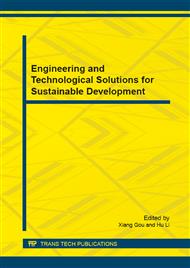p.387
p.391
p.396
p.406
p.411
p.417
p.422
p.426
p.430
Study of Dynamic Adsorption of Trace Kr and Xe by the 129Xe and 84Kr Tracing Method
Abstract:
The dynamic adsorption of atmospheric trace Kr and Xe, which discharged from the dynamic adsorption experimental equipment at room temperature, on selected adsorbents VACF and GCAC were studied. The stable isotope 84Kr and 129Xe were designated as tracing indicator and determined by ICP-MS. The results suggest that: (1) under the experimental conditions, which included that the column length was 1m, the flow was 2m3/h, and the maximum uniform loading density of VACF column and GCAC column was respectively 0.0165 g/cm3 and 0.459 g/cm3, the DAC which indicated the adsorption capacity of Kr and Xe adsorbed on VACF at room temperature was about 3.08×104cm3/g, the DAC which indicated the adsorption capacity of Kr and Xe adsorbed on GCAC at room temperature was about 5.55×103cm3/g; (2) the air flow capacity couldn’t be promoted by simply increasing the column length of VACF or GCAC. For VACF adsorbent, although its DAC was superior to the GCAC’s, but when the length of VACF column was increased to 2m, the air flow resistance was ascended obviously, and the air flow capacity was descended substantially. However, because the cost-effectiveness of GCAC adsorbent was higher, the flow resistance of GCAC column was smaller and the controlling range of air flow was larger than VACF, all of these results show that the comprehensive performance of GCAC is better than VACF at present.
Info:
Periodical:
Pages:
411-416
Citation:
Online since:
November 2014
Authors:
Keywords:
Price:
Сopyright:
© 2014 Trans Tech Publications Ltd. All Rights Reserved
Share:
Citation:


